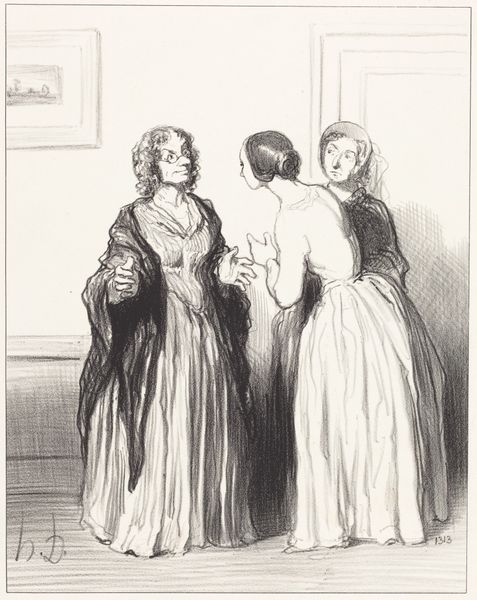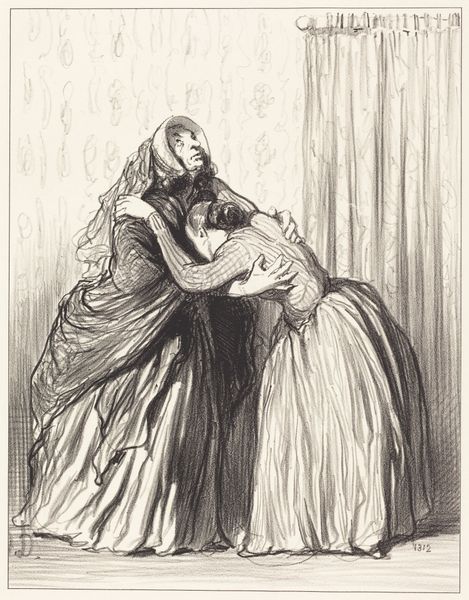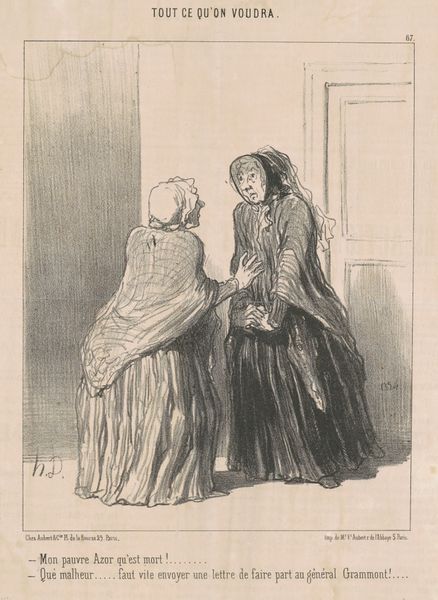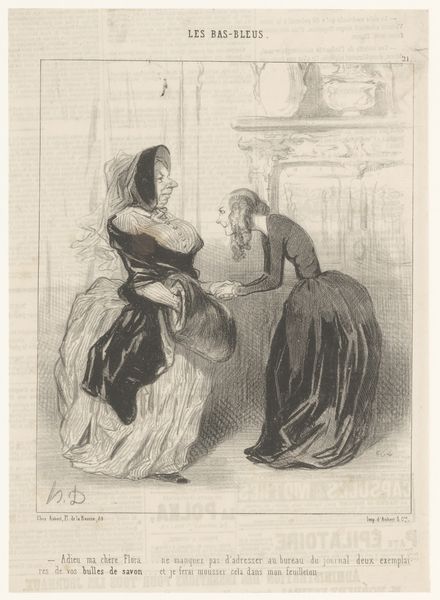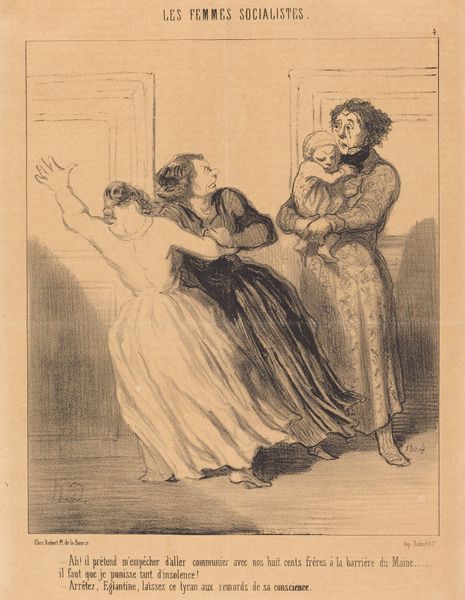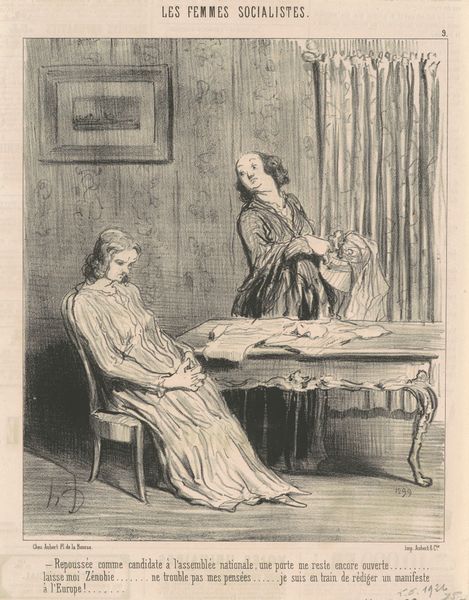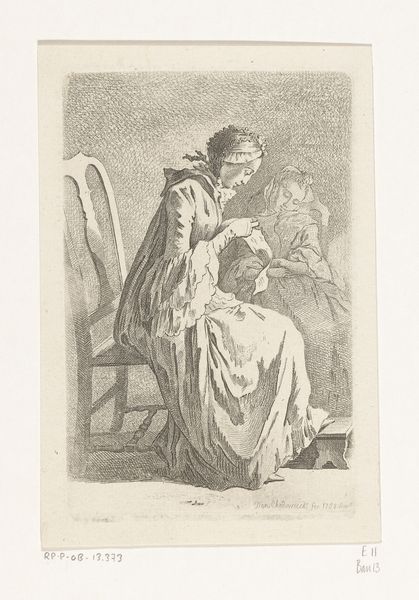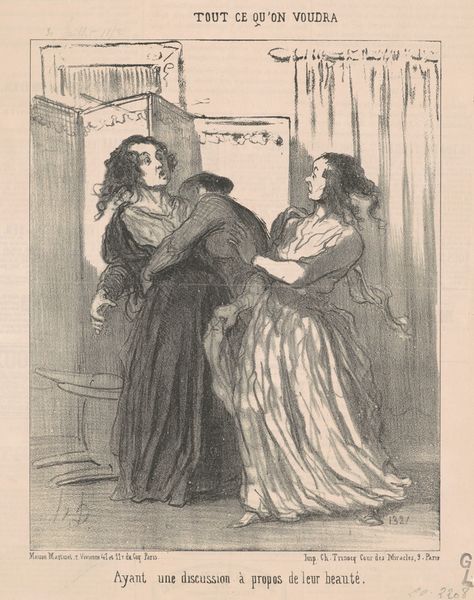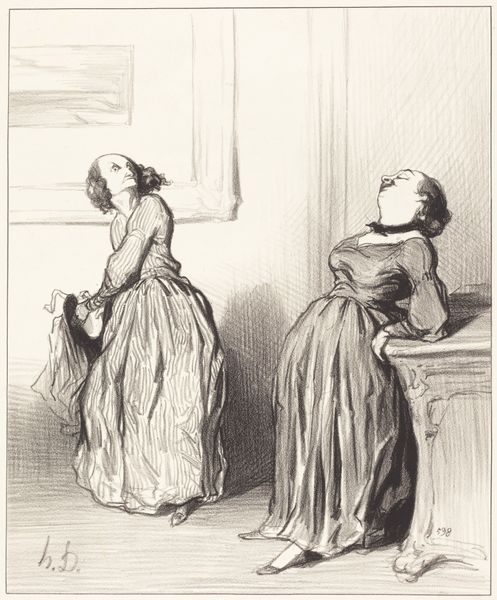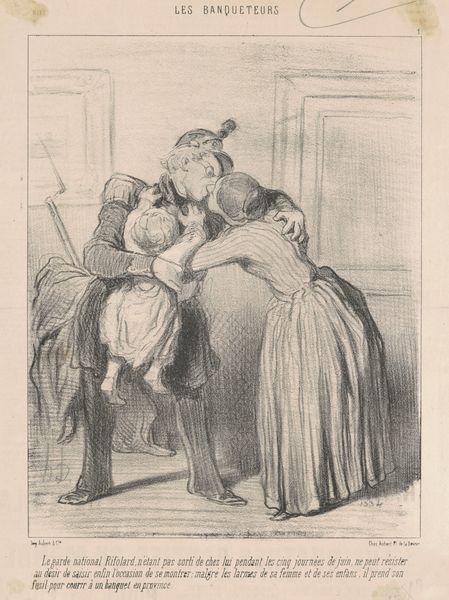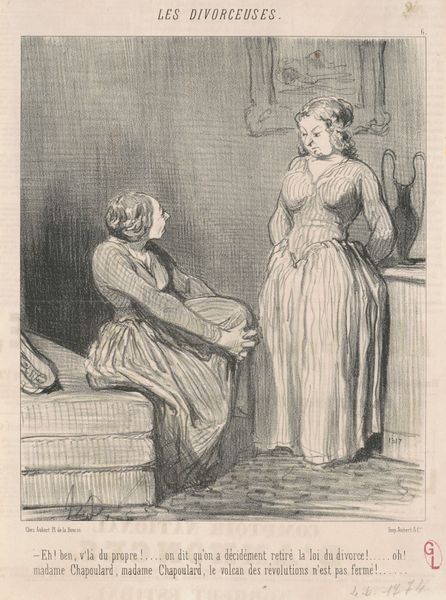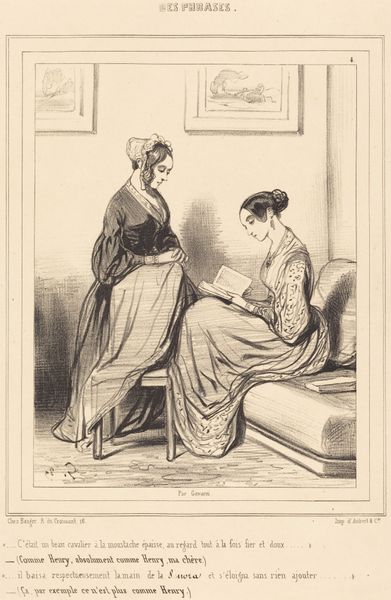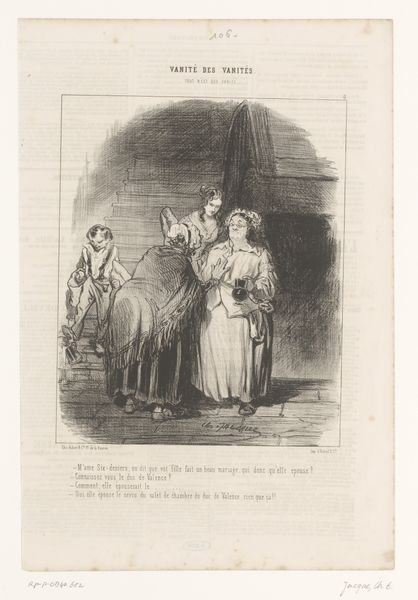
lithograph, print
#
lithograph
# print
#
caricature
#
romanticism
#
genre-painting
Copyright: National Gallery of Art: CC0 1.0
Editor: This lithograph by Honoré Daumier, titled "Vous êtes jolie..." from 1848, depicts a judge whispering to a young woman. It feels like a moment frozen in time, fraught with tension and power dynamics, captured in the stark contrasts of the print. What do you see in this piece? Curator: What interests me most is the material process behind this seemingly simple image. Lithography allowed Daumier to mass-produce this image and others like it. How might that production challenge traditional notions of Romanticism, considering the mechanization inherent in printmaking? Editor: That's interesting! I hadn't considered the social impact of making art accessible to more people. Does that accessibility amplify its commentary? Curator: Exactly. Consider Daumier's target audience – were they the elite, being critiqued, or the working class who perhaps felt victimized by the justice system? The means of production, the printing press, facilitates this commentary, transforming art into a vehicle for social critique available on a mass scale, and thus into a social tool, not merely an aesthetic object. How does the print medium, cheap and reproducible, speak to ideas about consumption and political action? Editor: It's a stark contrast to a unique painting displayed in a private collection. It creates space for art that is affordable and meaningful for everyone, regardless of status. So, looking beyond the image itself, it is about the labor and resources put in tension by artistic creation, the culture of justice in the mid-19th century and how the materiality changed how political commentary was shared and digested. Curator: Yes, and Daumier skillfully utilized readily available and inexpensive materials like lithographic stone and paper to circulate his pointed social critiques, further eroding boundaries between the fine and the popular. That informs how we should understand its effect. Editor: It all makes sense when seen from a social and production perspective. Curator: Indeed, looking closely at its production, we can grasp the message embedded in it, so thank you!
Comments
No comments
Be the first to comment and join the conversation on the ultimate creative platform.
